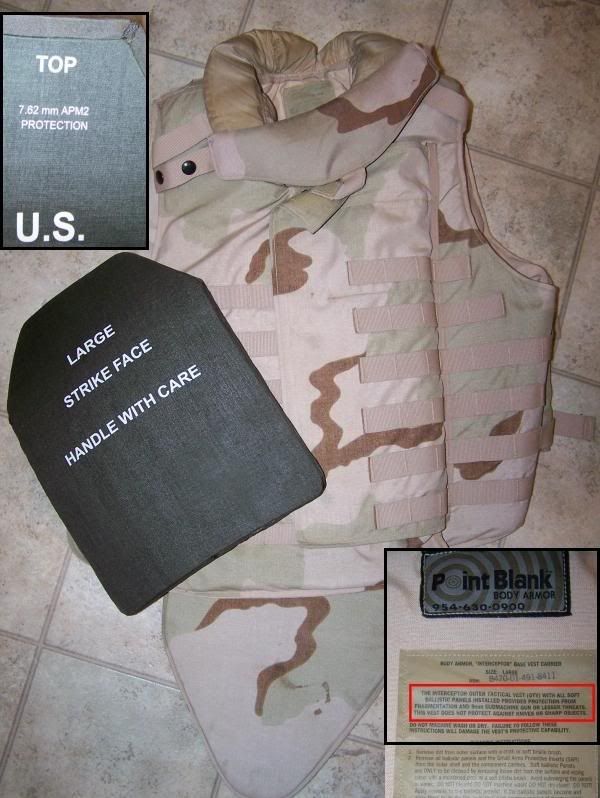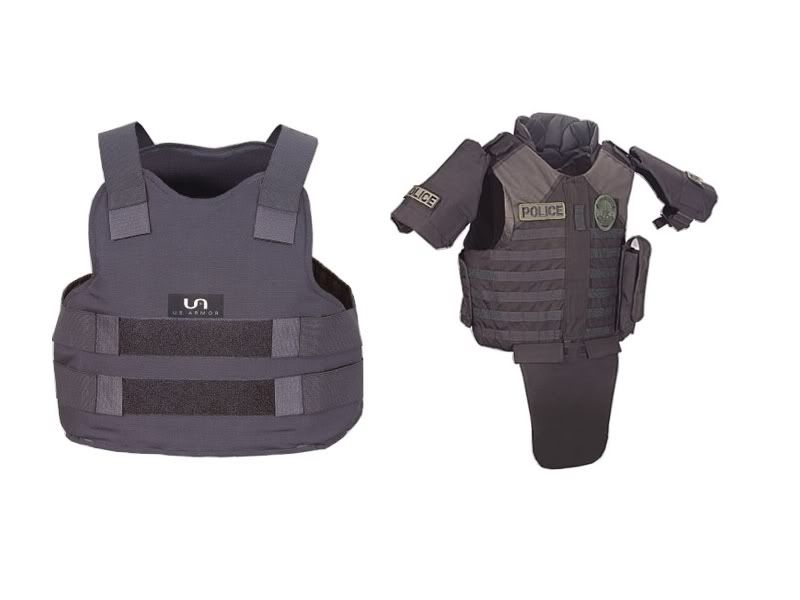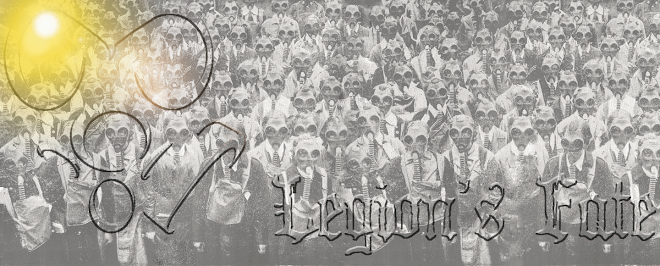Body armor is often erroniously called a "bullet proof vest." There is nothing completely "bullet proof," only bullet resistant. They work by spreading the force of the bullet or projectile over a large surface to stop it. Depending on the type, bullet resistant vests can be very effective. Earlier vests were made with all kinds of materials from silk to steel. Modern vests are made of Kevlar which was first produced in the mid 70's, as well as other materials including ceramics.
The requirements for protection differ between cops and the military, and vary widely depending on the task. The military has little use for concealable vests, and cops don't usually wear vests to protect from high explosives, the exception being bomb squads.
First we will look at body armor for the military. The US military first started using personal body armor during WWII for infantry, pilots, and air crews. The infantry armor did not see much use, but those flying around in airplanes needed something to protect them from anti-aircraft fragmentation, or "flak." Thus the flak jacket was developed using woven nylon fibers and was relatively successful. Flak jackets also proved useful for stopping fragmentation from high explosive artillery shells, mortars, and grenades.
There are those who falsely claim that we sent our troops into Iraq "without body armor." US forces have been issued a flak jacket as part of their standard equipment since WWII. The vest that I was first issued was the Personnel Armor System for Ground Troops (PASGT), used since the early 1980's. Here is a picture of a PASGT vest currently issued by the VA National Guard:

Click for a larger image:
The vest's label is pictured in the upper left hand corner. This vest uses multiple panels of 13 ply kevlar and is designed to protect against fragmentation. As you will see in part 3 of this post, the PASGT vest is capable of stopping a whole lot more.
The vest I was issued for Operation Enduring Freedom (OEF) and Operation Iraqi Freedom (OIF) I & III was the Interceptor vest by Point Blank Body Armor Inc. This is now the standard body armor for the Marines and the Army. It is designed to stop fragmentation and 9mm threats. I'm sure it would stop much more but I do not have an Interceptor to shoot. The vest is designed to use Small Arms Protective Inserts (SAPI) made of boron carbide ceramics and Spectra/Dyneema that will stop some types of rifle ammunition up to 7.62x51 NATO. I was issued the vest only for OEF & OIF I, and the vest with SAPI plates during OIF III. Here is a picture:

Click for a larger image:
Shown is the vest with throat guard, groin guard, and SAPI plate. Top left of picture shows the back of the SAPI plate, bottom right of the picture shows the vest's label. The label says:
"The Interceptor Outer Tactical Vest (OTV) with all soft ballistic panels installed provdes protection from fragmentation and 9mm submachine gun or lesser threats. This vest does not protect against knives or sharp objects."
Most modern body armor will not stop a knife. I have personaly put a knife and a rifle mounted bayonet through a flak jacket. Our sophisticated kin over in England have "knife resistant vests" because that gun ban has made them super safe.
Now for Police vests. Most of them are made to be light weight and concealable for patrol officers and detectives. The concealable vests do not open in the front like military vests and they are donned by pulling them over the head. They fasten with velcro straps. The same materials and technology for military armor is used for police armor, with Kevlar panels being the main protection. There are knife resistant panels and plates that can be inserted into some vests for correctional officers who work in prisons and jails where the requirement for bullet resistance is not needed.
There are vests with a higher rating of protection for SWAT officers and bomb squads. Some of the SWAT vests look similar to military vest and may even use SAPI plates to provide maximum protection. Here is a picture with a concealable vest for a patrol officer on the left, and a tactical vest on the right for a SWAT officer:

Click for a larger image:
The protection provided for police vests is rated using the National Institute of Justice (NIJ)standards. The protection level most used for concealable vests is level II or IIA. SWAT teams often require protection of IIIA or higher depending on the situation. Here is a chart showing the various NIJ levels of protection:
Click for a larger image:
Military vests do not use the NIJ standards since they open in the front. The PASGT vest is considered to be roughly a IIA to IIIA equivalent. This puts them in the category of concealable police vests. In the 3rd part of this post, you will see a PASGT vest that was tested against many different types of threats with surprizing results.
Check back soon!

No comments:
Post a Comment